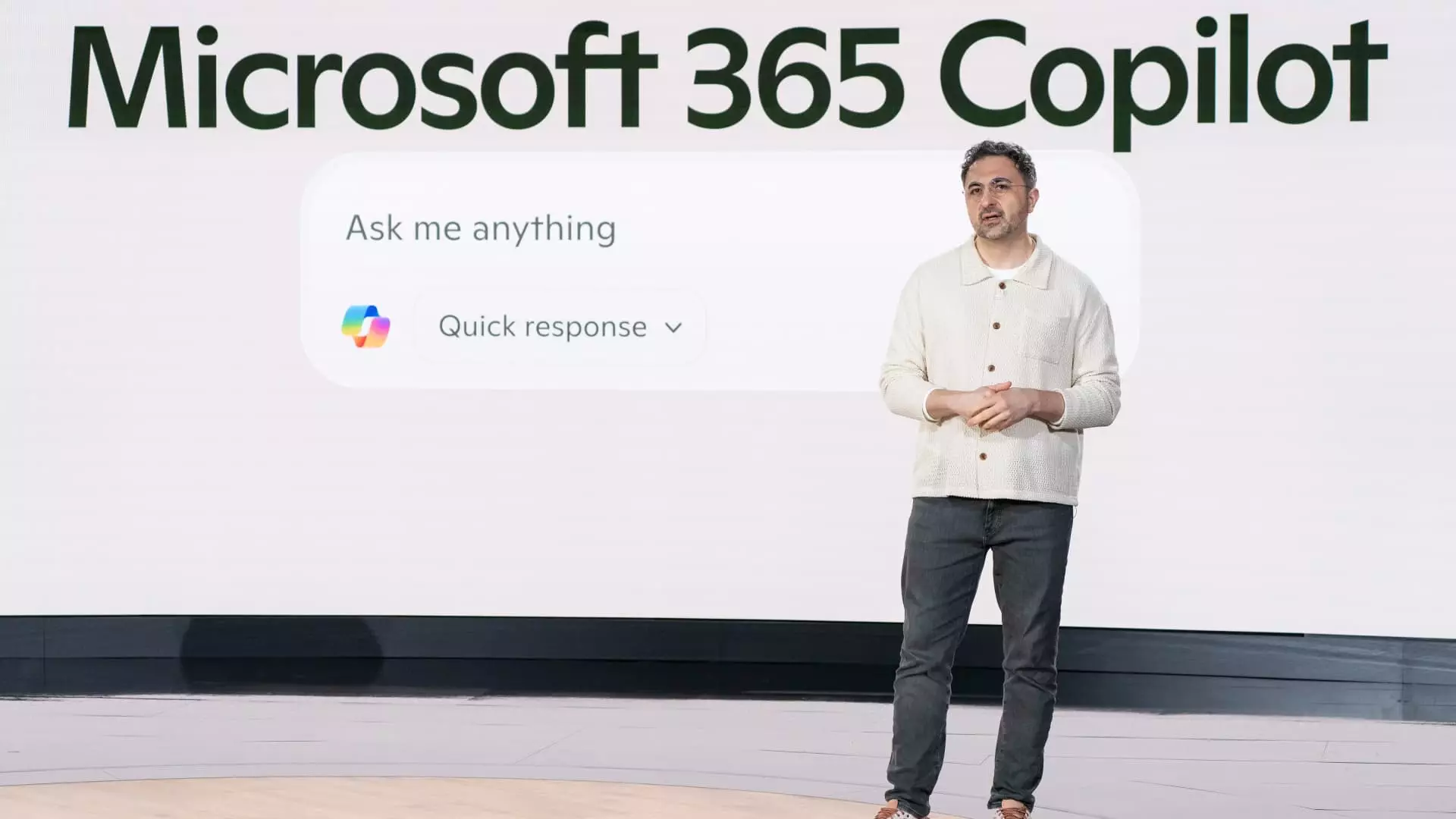In the rapidly evolving space of artificial intelligence, speed often feels like the ultimate currency. Yet, Microsoft, under the leadership of Mustafa Suleyman, is taking a distinctly counterintuitive approach: holding back on the relentless pursuit of cutting-edge AI models. Suleyman’s rationale, articulated in a recent interview, underscores a strategy rooted not in stagnation but in calculated timing. By waiting a few extra months, Microsoft aims to capitalize on developments that have already been field-tested—minimizing costs and honing in on pertinent applications. This “off-frontier” strategy, as Suleyman calls it, offers a smarter path that allows Microsoft to deliver tailored solutions without the excessive financial burden of being first to market.
This method resonates with a growing sentiment in the tech community that sometimes, the best way to innovate is to observe rather than chase. By allowing others to push the boundaries first, Microsoft can rely on established technologies, enriching its products while avoiding the pitfalls associated with early adoption. This patience ultimately enhances the company’s efficiency, ensuring it remains agile while delivering high-quality outcomes.
The Power of Collaboration
As technology stirs forward, Microsoft’s reliance on partnerships becomes increasingly evident. The fusion with OpenAI has stirred waves throughout the industry, granting Microsoft access to advanced AI frameworks and capabilities without shouldering the entire burden of development. Their mutual reinforcement is becoming a cornerstone for both entities as they work to reshape product landscapes with the infusion of AI across platforms like Bing and Windows. Suleyman’s insights reveal that the company now recognizes the significance of alliances in accelerating innovation—particularly evident in Microsoft’s substantial investments and strategic collaborations with startups such as CoreWeave.
However, this dependence also presents challenges. Tensions have surfaced—Microsoft has publicly acknowledged OpenAI as a competitor, showcasing the complexity of their relationship. As both entities continue to grow, the balance of collaboration and competition could redefine their joint trajectory. If managed wisely, this dynamic might become a case study for other corporations on navigating partnerships that blur the lines between cooperation and rivalry while pushing forward the AI frontier.
Memory: The Next Frontier in User Experience
One notable development signaling Microsoft’s commitment to enhancing user experience through AI is the introduction of a “memory” feature across its Copilot tool. This capability allows the assistant to remember repetitive user interactions, thus enabling a more personalized experience. Suleyman’s observations emphasize the potential of tailored AI solutions, echoing a sentiment that resonates with consumers and businesses alike: efficient and contextual AI engagement is the future. This enhancement not only improves usability but also positions Microsoft in a competitive realm against solutions like OpenAI’s ChatGPT, which already boasts a significant user base.
Memory in AI applications is more than just a gimmick; it’s a vital leap toward creating humanized interactions with technology. By integrating such features, Microsoft is not merely following a trend; it’s shaping the conversation around AI and user-centric design, showcasing how learned experiences can significantly elevate engagement metrics.
Internal Development: A Long-Term Vision
While partnerships are vital, Suleyman’s commentary also indicates Microsoft’s intent to cultivate its internal capabilities. Fostering a robust AI team and investing heavily in computing resources highlights the company’s commitment to self-sufficiency. The balance between collaborating with external entities like OpenAI and developing in-house solutions speaks to a strategic foresight that could bear fruit in the long run.
The emphasis on building a solid internal framework aims not just at immediate solutions but also at establishing an ecosystem that could sustain future growth. By channeling efforts toward long-term development rather than chasing every trend, Microsoft envisions a future where its AI capabilities can stand on their own—a bold move in an industry where many are content to hitch their wagon to the latest advancements.
In a world where technology races forward, Microsoft’s approach is both refreshing and strategically sound. By prioritizing measured development, collaboration, and user engagement, it positions itself as a thoughtful leader in AI—one that is more concerned with delivering value than merely being the fastest to market.


Leave a Reply
You must be logged in to post a comment.